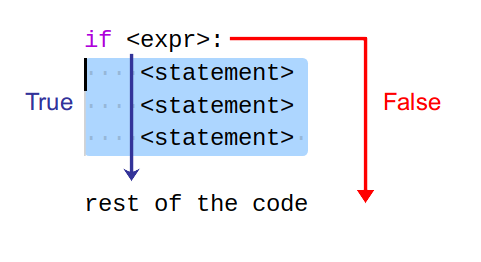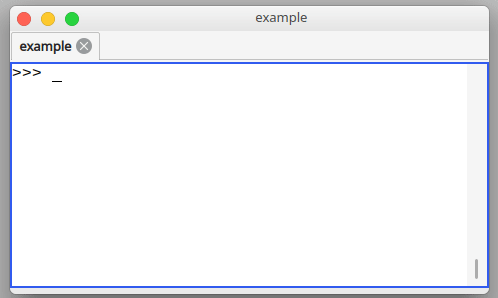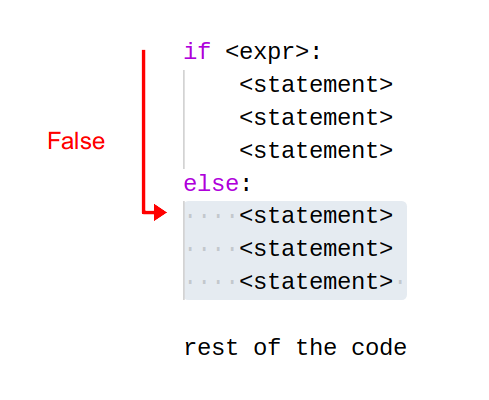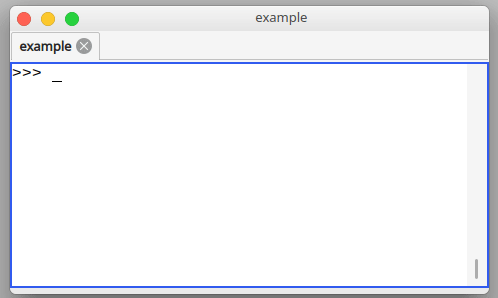An if statement is a structure for decision making in Python. Python can execute line(s) of code based on a condition (sometimes this is called conditional statement)
By default Python runs lines of code sequentially, first line 1, then line 2, then line 3 etcetera. By using an if statement you can change this.
Lines of code inside the code blocks must be indented with four spaces at all times (not tabs)
Related Course: Complete Python Programming Course & Exercises
If statement syntax
The most basic form of an if statement is:
if <expr>: |
In this form:
<expr>is an expressions that is evaluated<code>one or more lines of code. These must be indentend by four spaces.if the
<expr>yields True: the code is executed- If the
<expr>yields False: the code is skipped

Example: Python if statement
The example below shows an if statement.
The user types x (an integer). Only if the value is greater than zero, it is shown.
x = int(input("Enter x: ")) |
An example run is shown below:
Enter x: 5 |
If you type zero or lower, nothing is shown:
Enter x: 0 |

Related Course: Complete Python Programming Course & Exercises
If else
The else keyword can be added to the if statement. The block of code after the else, is only executed if <expr> is False.
x = int(input("Enter x: ")) |
Note lines of code are in the block of code, if they have four spaces in front of them.

Related Course: Complete Python Programming Course & Exercises
elif clause
There’s also the elif clause. Short for else if. This lets you check multiple conditions one by one.
if <expr>: |
Any number can be added. The example shows the checking of multipe conditions:
name = "Vivian" |
You can optionally add another else at the end. Only one line(s) of code will be executed, but which depends on the condition.
Comparison operators
Python if statements usually have one of the following operators:
>greater than<smaller than==equals!=is not>=greater than or equal<=smaller than or equal
For example,
The condition x > 100 means only “the value of x should be greater than 100”.
The condition x != 2 means “the value of x should not be two”.
The program below tests if the value of x is equal to four.
x = int(input("Tell X ")) |
The program always prints ‘End of program’ (normal sequential execution).
The text ‘You guessed correctly!’ will only be printed if the variable x equals four.
Nested if statements
If statements can be within if statements. That structure is called a nested if.
As a general rule you should not do this more than two times, because it gets very confusing to read.
The syntax is:
if <expr>: |
For example the if statement below:
if x > 0: |
The nested statements should have 8 spaces, because they are within the second if statement.

You can still use elif and else within a nested if.
if x > 0: |
One line if statements
Usually an if statements spans multiple lines likes so:
if <expr>: |
But you can write an if statement on a single line:
if <expr>:<statement> |
There can even be multiple statements, if you separate them by a semicolon.
if <expr>:<statement>;<statement>;<statement> |
The example below shows the single line if statement:
x = 3 |
You can do single line if statements like that:
x = 3 |
Another example:
x = 2 |
Related Course: Complete Python Programming Course & Exercises
Boolean operators
You can apply boolean operators to the condition. This way you can combine if statements.
if <expr> and <expr>: |
A boolean or is also possible:
if <expr> or <expr>: |
Python if multiple conditions
What if you want to have multiple conditions? One way to deal with that is if you can type a lot of if statements like so:
x = 8 |
But this becomes spaghetti code, not easy to read and might get confusing quickly. What you want to do is use the elif and else keywords.
x = 8 |
These codes will do exactly the same, but the above version is preferred because of readability and maintainability.
Summary
Normal execution is line by line, also called sequential
If statements select which code to execute.
If statements are decision makers. Only execute code if condition is True.
the
ifstatement is used when you need to execute code only if the condition is Truethe
elseclause is used when you want to run code if one condition failsthe
elifclause lets you specify other conditionsAn if statement is a type of control structure. A control structure directs the order of execution, in this case you want to run code only if a condition is True.
If you are a Python beginner, then I highly recommend this book.

After writing the word else and typing the colon it is saying invalid syntax. I need help with this.
Make sure to have four spaces with every indent.
What program exactly should I be using for this? I am using the Python 3.5.1 Shell on Mac and when I attempt to do the beginning of the program (x = int(input("tell x"))) and hit enter a blue "Tell X" appears and if I attempt to go down another line to continue the program it treats it as if I have ended that program. This is probably an easy fix but any help is appreciated :)
I have also not obtained, and spaces set, the combination of money changers, execution begins after the Enter.
when i type x = int(input("Tell X")) in the second line it says tell x, the what should i do to go to the next line without is saying syntaxerorr: invalid syntax
after typing
x = int(input('tell x'))in the second line it says tell x , at the same line i write if x == 4 and then it says and if i press enter its the same , how should i go to the third line without this appearingHi, I need help with this. For example, the:
x = int(input("Tell X"))if x == 4:
print('You guessed correctly!')
else:
print('Wrong guess')
print('End of program.')
One that it gives as an example, I want to know how to run it all at once in Python. When I type it out, after I type the:
Bit out it already prints either "You guessed correctly" or "Wrong guess" but I want them to print after I have typed all the code. And when I copy and paste it all in at once, it doesn't recognise another line/bit of it as meant to be on a new line and it doesn't put the >>> before each bit therefore not running it properly.
Am I missing something?
after writing print( 'you guessed correctly!') i get this error message
please help , when i go back and click enter it works normal please assistindention errors are about the number of spaces. Put four spaces inside the if statement blocks
Where do i type in this command
x = int(input("Tell X"))if x == 4:
print('You guessed correctly!')
else:
print('Wrong guess')
print('End of program.')
i tried to type this command in python 3.5.2 Shell, its showing an error. i need help in this.
Thanks
Copy this code into a text file, save it as example1.py
Then run